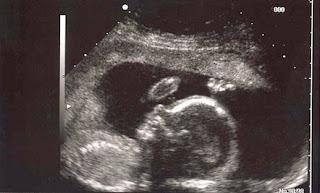This procedure helps the doctor
to detect the possibility of genetic, metabolic or neurological disorders in
developing fetus.
When doing this?
Since amniocentesis presents
minimal risk of abortion, from less than 1% is indicated only for special cases
where it is important to confirm the health of the baby. If the mother is over
35 years, have a family history of genetic problems or be a carrier of any of
them, it is best to perform this test for early detection of fetal
abnormalities.
The time of pregnancy for this
test is between weeks 15 and 20 of pregnancy. Sometimes also recommended an
amniocentesis is in the third trimester of pregnancy to check the development
of the fetal lungs, if there is risk of preterm delivery.
How is it done?
The procedure is completely
ambulatory and to begin an ultrasound is performed to detect the position of
the fetus, and the amniotic sac. Then a needle is inserted through the abdomen
into the uterus, and suck about 14 cc of liquid.
After the review recommends the
mother to rest for the day and avoid strenuous activities during the next week.
Why practice it?
Amniocentesis allows early
detection of birth defects that can be treated before birth. In these cases,
early action is key to a better quality of life the newborn.
When the detected defects can not
be treated during pregnancy, early information helps create along with the
physician a plan of action that allows access to the best possible care and
treatment.
This test should be indicated by
the physician. If you believe that there are risk factors which need an
amniocentesis should be discussed with your specialist for the best advice.

No comments:
Post a Comment